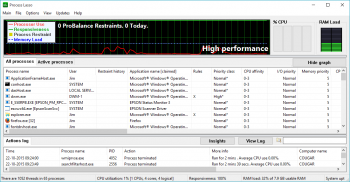

2900-Series doubled the core count to as much as 32 cores and introduced a new automatic overclocking feature called Precision Boost Overdrive. The biggest change second-generation brought is introduction of higher core count models but at the cost of a much higher thermal design point. 2nd-gen parts still use the same sTR4 socket and are fully backwards-compatible with 1st-generation. Tech: AMD-V/ Vi, Precision Boost, SMEP, 2-way SMT, XFR (+200 MHz)Ģ900-Series (Zen+) See also: Zen+ µarch and Codename ColfaxĪnnounced in early August 2018, second-generation Threadripper processors are based on the Zen+ microarchitecture ,fabricated on GlobalFoundries 12 nm process, and feature a modest frequency and memory improvement.ISA: Everything up to AVX2 (i.e., SMM, FPU, NX, MMX, SSE, SSE2, SSE3, SSSE3, SSE4.1, SSE4.2, AES, AVX, FMA3, and AVX2), and SHA.I/O: 60 PCIe 3.0 lanes (x48 lanes for multiple GPUs, x12 for I/O).Memory controller: Quad-channel, up to 512 GiB per channel (2 TiB in total).Models 1900-Series (Zen) See also: Zen µarch and Codename WhitehavenĪnnounced in May 2017 and introduced in July of 2017, first-generation Threadripper is based on the Zen microarchitecture and is manufactured on GF's 14 nm process. Higher-performance dies allow for higher efficiency in terms of power consumption at higher clock speeds and in theory allow for higher overclocking overhead.

The top 5% Ryzen dies are then used for the Threadripper models. Since every die has a slightly different performance characteristics, even from within the same wafer, AMD sorts those dies based on this performance. UbuLinux_6core_switcher.zip (288 - damn… I was hoping that would do the trick.While Threadripper uses the same dies as the ones used for Ryzen, their performance characteristics are a little different. sh (Bash) file you might have to right click on it and make executable or something like that.Įdit: if that one doesn’t do anything try this one…
#Process lasso and threadripper download#
Download it, extract it, start up GD for 5-10 seconds then run the script - if it miraculously works then what it should do is disable Core 0 for GD, it sleeps for 8 secs, then reenables. If it actually works I will be surprised. I have no way to test this right at the moment but I took a stab at trying to make you a script by reading up on bash scripts and reading up on what I would need to do to have the system retrieve and store GD’s PID into a variable we could use and then throwing spaghetti at the wall here…

Now, if only there was some way to have some sort of “batch file” that determined GD’s PID number after the game is launched and automatically did the terminal command … Second EDIT: Just to make sure there was nothing weird about my system, I ran XCOM, and all cores were active mostly equally (the even numbered cores having about an equal level that’s more than the fairly equal level for the odd ones for some reason). So perhaps there was hardly any, if any, improvement at all. I wish I could remember what I did exactly at that time when I was trying to turn core 0 off long ago.ĮDIT: Now without disabling core 2, I noticed two other cores were always somewhat active. I think performance might have increased somewhat - my fps would get bogged down in those occasional situations where you are faced with a huge swarm of enemies in SR. So I disabled core 2 and then 2 other cores are doing more than before (the other 5 doing barely anything - and by the way GD goes back to all cores automatically without me doing anything after some time), but still not equally like I see in your graph in your first post. OK, tried Process Lasso and GD starts with all cores, but core 2 still seems to get the primary load at first.


 0 kommentar(er)
0 kommentar(er)
